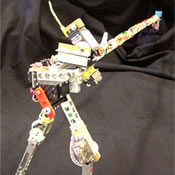
|
{ C O N T E N T S }
Volume 11, Issue 1 ISCB Honors The ISMB Organization PLoS Computational Biology Overview 11th Israeli Bioinformatics Taking a Stand on Software Sharing ISCB Members Speak Out on US Entry Visa Issues ISCB’s New Software MentorNet Report Card: Year Two In Memory of Cover Image
|
PLoS Computational Biology Overview
|

